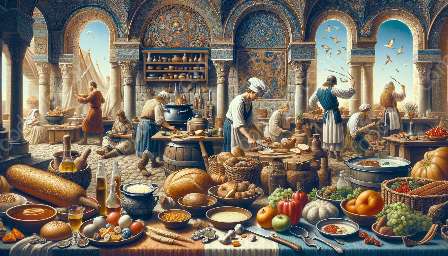Indian culinary practices have a rich and diverse history, with influences from ancient and medieval times shaping the food culture of the region. The traditional methods of cooking, unique spices, and cultural significance of food have made Indian cuisine stand out globally.
Ancient Indian Culinary Practices
Ancient Indian culinary practices date back thousands of years and have greatly influenced the country's diverse regional cuisines. The principles of cooking in ancient India were guided by the concept of 'Ayurveda,' which emphasized the balance of tastes, nutrition, and eating fresh and seasonal ingredients.
Farm-to-Table Approach
Ancient Indians practiced a farm-to-table approach, utilizing fresh produce and locally sourced ingredients. They revered the cow as a sacred animal, and dairy products such as ghee and yogurt formed an essential part of their diet.
Usage of Spices
Spices have always played a vital role in Indian culinary practices. The ancient Indians were knowledgeable about the medicinal and culinary properties of various spices and herbs. This knowledge was documented in texts such as the 'Charaka Samhita' and the 'Sushruta Samhita.'
Vegetarianism
Ancient Indian culinary practices also included a significant emphasis on vegetarianism. The concept of 'ahimsa,' or non-violence, influenced the food choices of many ancient Indians, leading to the popularity of vegetarian dishes that are still prevalent in Indian cuisine today.
Medieval Culinary Practices
The medieval period in India witnessed the confluence of various cultures and culinary traditions. The Mughal Empire, for instance, introduced Persian-influenced dishes and cooking techniques, adding to the rich tapestry of Indian culinary practices.
Introduction of New Ingredients
During the medieval era, Indian culinary practices saw the introduction of new ingredients such as dry fruits, nuts, and exotic spices like saffron. The Mughals, known for their extravagant feasts, brought about a fusion of flavors that significantly impacted Indian cuisine.
Tandoori Cooking
The Mughals also introduced the technique of tandoori cooking, where marinated meats were cooked in a clay oven or 'tandoor.' This cooking method continues to be a significant part of Indian culinary practices, especially in Northern regions of India.
Food Culture and History
Indian culinary practices have deeply influenced the food culture and history of the country. Food in India is not merely sustenance but an integral part of the social fabric, religious rituals, and cultural celebrations.
Regional Diversity
India's diverse culinary landscape is a testament to the rich food culture and history of the country. Each region boasts its own distinctive culinary practices, reflecting the unique geographical, cultural, and historical influences.
Festive Cuisine
Indian festivals are synonymous with traditional cuisine that holds a special place in the country's food culture and history. Festive dishes are prepared with elaborate care, and recipes are often passed down through generations, preserving ancient culinary practices.
Global Influence
Indian cuisine has gained global prominence, and its ancient culinary practices continue to inspire chefs and food enthusiasts worldwide. The explosion of flavors, vibrant colors, and diverse vegetarian and non-vegetarian dishes showcase the enduring legacy of ancient Indian culinary practices.

